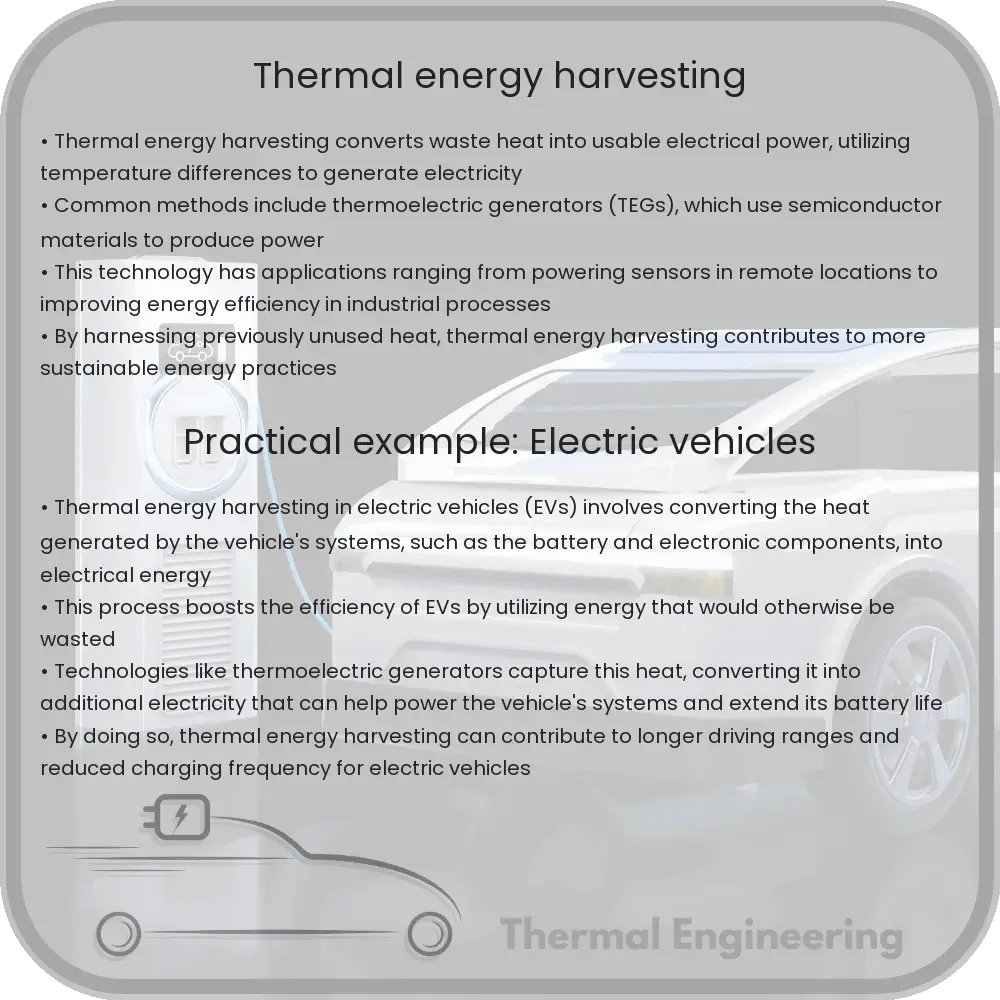Learn about thermal energy harvesting, a method that converts waste heat into electricity, improving energy efficiency and sustainability.

Understanding Thermal Energy Harvesting
Thermal energy harvesting is an innovative method of capturing and converting waste heat into usable electricity, playing a crucial role in improving energy efficiency and sustainability. This approach can help mitigate environmental impact by making use of the vast amounts of heat that are usually discarded by industrial processes, electronic devices, and other sources.
How Thermal Energy Harvesting Works
The fundamental principle behind thermal energy harvesting lies in the concept of thermoelectricity, particularly the Seebeck effect. Discovered in 1821 by Thomas Johann Seebeck, the Seebeck effect involves generating electric voltage across different materials when there is a temperature difference between them. The basic equation for the voltage generated can be expressed as:
V = S * ΔT,
- V is the voltage generated,
- S is the Seebeck coefficient (material-dependent),
- ΔT is the temperature difference across the materials.
The Seebeck coefficient, a measure of the magnitude of an induced thermoelectric voltage in response to a temperature difference across that material, is critical in determining the efficiency of a thermoelectric generator (TEG).
Applications of Thermal Energy Harvesting
- Industrial Waste Heat Recovery: Industries such as manufacturing and power generation often produce large quantities of waste heat. TEGs can be utilized to capture some of this heat and convert it into electrical power, potentially leading to significant energy savings and operational efficiencies.
- Automotive: In vehicles, significant amounts of heat are expelled through the exhaust and cooling systems. TEGs can recover part of this heat and convert it into electricity that can power vehicle electronics or contribute to the vehicle’s propulsion system.
- Consumer Electronics: Small-scale thermal energy harvesting systems can be integrated into consumer electronics to extend battery life. For example, a TEG can harness body heat to power wearable devices.
Challenges in Thermal Energy Harvesting
Despite its potential, thermal energy harvesting faces several challenges that must be addressed to increase its widespread adoption:
- Material Efficiency: The efficiency of current thermoelectric materials is relatively low. Research is ongoing to discover or engineer materials with higher Seebeck coefficients and better heat-to-electricity conversion rates.
- Cost-effectiveness: High-quality thermoelectric materials and the technology for assembling TEGs are often expensive. Finding cost-effective solutions is crucial for both large-scale and consumer-level applications.
- Durability and Stability: TEGs must operate consistently under varying temperatures and over long periods. Ensuring the longevity and reliability of these systems remains a significant engineering challenge.
Future Prospects
The future of thermal energy harvesting looks promising with ongoing advancements in materials science and thermoelectric technology. Innovations such as nanostructured materials and quantum effects hold the potential to revolutionize the efficiency of these systems. Additionally, integrating thermal energy harvesting with other renewable energy technologies could lead to more sustainable and resilient energy systems.
As research progresses and as more practical and cost-effective solutions are developed, the adoption of thermal energy harvesting technologies is expected to grow, playing a pivotal role in the global push towards energy efficiency and sustainability.